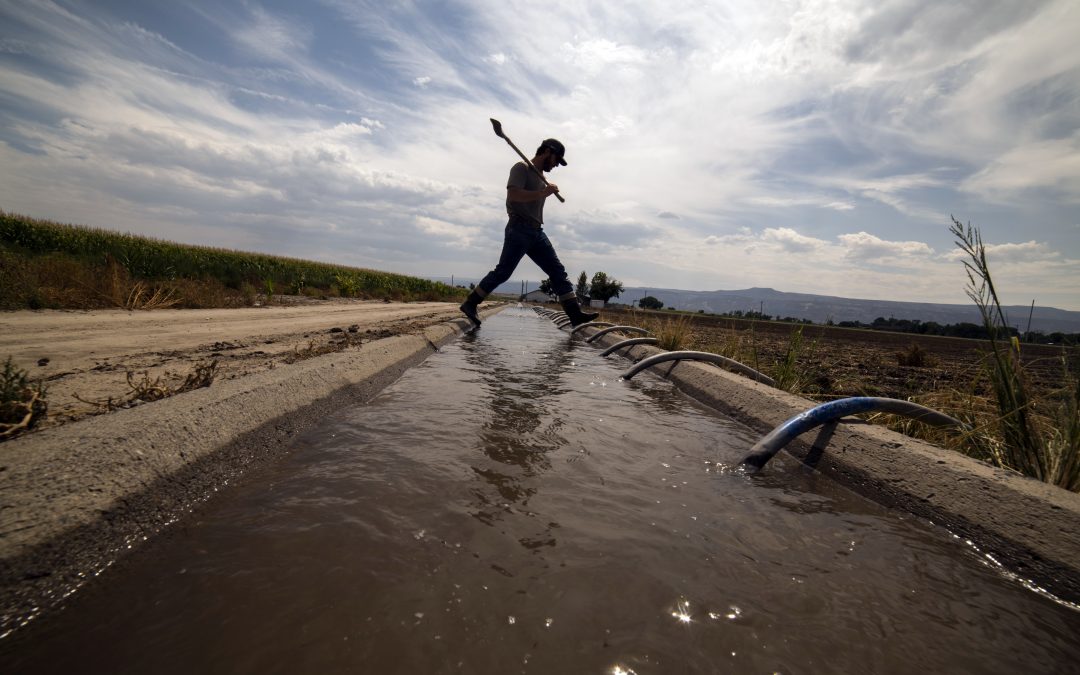BOULDER — Colorado River talks are back in gear after stalling earlier this year, but little progress has been made on key sticking points, like how water cuts will be made and the role of Upper Basin reservoirs, state officials said Thursday.
More than 200 water watchers packed a conference room at the University of Colorado Law School in Boulder to hear updates from the officials, who represent the seven basin states deliberating over how the river will be managed after 2026. It was the negotiators’ first public meeting since basin states failed to reach a consensus in March and instead released two competing visions for the river’s future.
“In an ideal world we would have come together and gotten to a consensus immediately … but it’s not an ideal world, and it’s a really difficult problem,” said Estevan López, New Mexico’s Colorado River negotiator. “I think what you have from us is a commitment to keep working on it.”
Basin officials are negotiating Colorado River management in order to create new interstate water sharing rules that will replace the current agreements, created in 2007. The overburdened river system provides water to seven Western states, two Mexican states and 30 Native American tribes.
The role of Upper Basin reservoirs
In March, the Lower Basin states of Arizona, California and Nevada released a proposal that included several reservoirs in the Upper Basin, which consists of Colorado, New Mexico, Utah and Wyoming. The Lower Basin states said including Upper Basin reservoirs would offer a better way to gauge the river basin’s total storage. One of those reservoirs is Blue Mesa, the largest in Colorado.
“If you want plenty of water in Blue Mesa on Labor Day, then the seven-reservoir solution is better than the two-reservoir solution,” said John Entsminger, Nevada’s negotiator and manager of the Southern Nevada Water Authority.
The idea doesn’t sit well with Upper Basin officials, who say the reservoirs were built for use in their basin, not to shore up Lower Basin supplies. Officials said there’s more work to be done on this facet of the river’s management but offered no details on how they might reach a compromise.
“We’re open to all of the ugly conversations that need to be had,” said Becky Mitchell, Colorado’s top river negotiator. “Sometimes it’s not enjoyable to have those in a room like this with folks watching, but we’re open to having conversations.”
Calls for water cuts
The Lower Basin proposal also called on the four Upper Basin states to cut their use by 1.5 million acre-feet or more when the combined storage in Lake Mead, Lake Powell and five other reservoirs falls below 38% of capacity.
The Upper Basin states have taken a hard stance against mandatory reductions. They say Upper Basin farmers, ranchers and other water users already face short supplies that impact livelihoods and communities — while the Lower Basin can depend on more predictable supplies out of lakes Mead and Powell, the largest reservoirs in the basin.
It’s to be determined whether the annual cuts in the Upper Basin caused by Mother Nature would be counted toward the 1.5 million in cuts outlined in the Lower Basin proposal, Mitchell said.
The Upper Basin’s stance has been a point of contention in the Lower Basin, whose proposal calls for cutbacks across all seven states when reservoir storage falls to critically low levels.
“There’s flexibility in the Lower Basin as to how and when the Upper Basin will contribute,” Entsminger said. “We just don’t want that answer to be zero, never.”
The Lower Basin has made a significant commitment to reduce its use by 1.5 million acre-feet after storage in seven basin reservoirs, including Mead and Powell, falls below 70% of capacity. That strategy would help correct the imbalance between supply and demand in the Lower Basin, the negotiators said. Arizona, California and Nevada would be using less than their legal entitlement to Colorado River water.
“This idea that the Upper Basin is being asked to sacrifice so that the Lower Basin can use more than our compact entitlements is belied by the math that is in the Lower Basin proposal,” Entsminger said.
What’s next for negotiations?
If the seven states can reach a basinwide consensus in coming months, their proposal could be included in a federal analysis that is scheduled to produce draft alternatives for basin management in December.
The draft will include management alternatives identified by the U.S. Bureau of Reclamation, which could prompt further negotiations among states. The federal agency manages reservoirs across the West as well as water user contracts in the Lower Basin.
A presidential election in November could throw a wrench in the federal environmental impact statement, or EIS, process.
“You also don’t have any real idea what’s going to be done with that EIS in the next administration, whether it’s Republican or Democrat,” Entsminger said.
The state negotiators also retained Thursday their rights to seek out the nuclear option — going to the U.S. Supreme Court — if the options on the table are unacceptable. That’s a risk because it puts decision making in the hands of judges who have varying degrees of familiarity with Western water management.
“None of us wants to go there,” López said. “But that is the lever that we have to make sure everyone understands what the risk is and stays away from those really risky decisions.”



 Print
Print